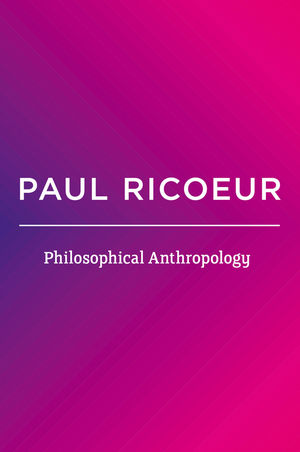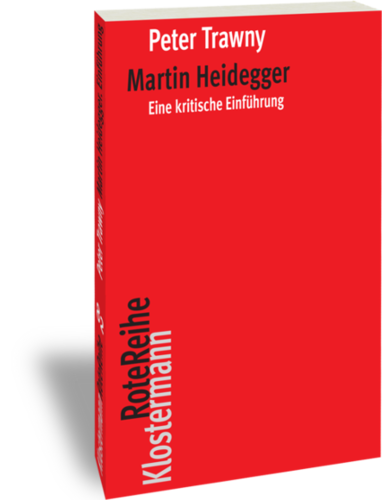Oxford University Press
2014
Hardback £75.00
624
Reviewed by: Nicolás Trujillo-Osorio (Diego Portales University, Chile and Leiden University, The Netherlands)
When the first dossier on neo-Kantianism was published in the 2008 Summer edition of Philosophical Forum, several scholars considered it as an unexpected work about some forgotten philosophers. Since the publication of those papers, much work has been done in this field.[1] Almost ten years later it is no surprise then that neo-Kantianism has come back as a particular subject of research, as much for philosophers as for social scientists.[2] However, it is also true, as the author of this book states, that the study of neo-Kantianism is still in its infancy (Beiser, 2014; 12). To contribute to understanding neo-Kantianism as a historical source of our contemporary philosophy, Frederick Beiser takes on the task of explaining the historical emergence of this fuzzy movement, known maybe too uncritically, as neo-Kantianism.
The book is organized in three chronological parts. The first part titled The Lost Tradition. It clusters around four German philosophers: Jakob Friedrich Fries (1773-1843), Johann Friedrich Herbart (1776-1841), Friedrich Eduard Beneke (1824-1882), and Herman von Helmholtz (1821-1894). The emergence of psychologism as the leading interpretation of Kant’s philosophy is the crux of the matter here. The second part is called The Coming of Age. It deals with the work of Kuno Fischer (1824-1907), Eduard Zeller (1814-1908), Otto Liebmann (1840-1912), Jürgen Bona Meyer (1829-1897) and Friedrich Albert Lange (1828-1875). It also analyzes two important polemics of the period: pessimism and darwinism. Finally, the last part of the book bears the title The New Establishment. Beiser presents here the work of the philosophers who became the official spokesmen of Neo-Kantianism, as it is commonly understood: Hermann Cohen (1842-1918) – father of the Marburg School –, Wilhelm Windelband (1848-1915) – father of the Southwest School – and Alois Riehl (1844-1924) – main representative of the Göttingen School.
Besides the chronological and biographical methodology, Beiser organizes the book on the basis of two fundamental theoretical problems: the identity crisis of philosophy and the materialism controversy (Beiser; 2014; 35-41). Just like in his earlier books on the history of German Philosophy, [3] Beiser interprets the 19th century as the period of confrontation with these two problems. Hence, Neo-Kantianism is understood first and foremost as a particular stance in the middle of a hectic scenario, where philosophy was the antagonist of the emergent natural sciences. What is the task of philosophy? Is it true that everything can be reduced to material grounds? What is the nature of matter and what can philosophers say in this regard? One principal aim of the book is to analyze the main neo-Kantian sources, in order to display the different discussions and arguments stressed by these German Scholars in and against their intellectual context. A closer look into the three parts of the book will show the main thesis of the book. Since I cannot analyze here the interpretation of each philosopher mentioned by the author, I will focus on explaining the core ideas of each section and on mentioning a few exemplar topics. Finally, to conclude I will develop two critical remarks on Beiser’s definition of neo-Kantian transcendental philosophy.
I am of the opinion that the First Part of the book is by far the most intrepid one. It aims at redefining the common, traditional understanding of the history of neo-Kantianism. According to the literature, neo-Kantianism was an academic philosophical movement which began around 1860. The point of departure was Otto Liebmann’s book Kant und die Epigonen (1865), which forged for the first time, as a catchphrase, the idea of going back to Kant. From then on, the emergence of three different schools of neo-Kantianism seemed almost natural. Each School developed distinct interpretations and emphasized different concepts of Kant’s critical philosophy. This produced the impression that neo-Kantianism was nothing but a fuzzy university movement. But nothing comes from nothing. Every idea, as small it might be, emerges from a lengthy period of inception, dissemination, and struggle. It is Beiser’s aim to prove that the traditional interpretations of the history of neo-Kantianism have hitherto been too narrow. Unlike Ernst Cassirer and Klaus Christian Köhnke, Beiser maintains that Liebmann’s book is rather the end point of a trend begun seventy years earlier, exactly in 1790, even before Kant’s own death. The date of birth is not meaningless. On the contrary, it allows us to understand neo-Kantianism not only as a university movement, but also as a truly cultural renewal on German soil. By the end of the 18th century, Jakob Friedrich Fries, Johann Friedrich Herbart, and after that of Friedrich Eduard Beneke, criticized Speculative Idealism for its metaphysical and foundationalist doctrines. They were the first advocates of Kantian doctrines, and with their criticisms mostly against Schelling and Hegel, they settled the first phase of the neo-Kantian movement. Notwithstanding their different readings of Kant’s philosophy, they all developed an empirical-based psychology under Kantian terms. In particular, they shared five fundamental positions. First, the central role of empirical psychology for epistemology. Second, the fundamental truth of transcendental idealism. Third, the reaction against speculative idealism. Fourth, the need for an empirical and analytical method for philosophy. Fifth, allegiance to the Kantian tradition. According to Beiser, the gist of the first phase was represented by Jakob Fries’s book Reinhold, Fichte, Schelling, published in 1803.
In spite of their academic posts in well-known German universities, and unlike speculative idealists, the early neo-Kantian inception movement disappeared rather rapidly. Beiser points out two reasons for their vanishing. First, the political and intellectual dispute with the hegemonic rationalist-speculative tradition of Reinhold, Fichte, Schelling, and Hegel. Second, the interpretation of their “advocacy of empirical psychology” as a manifestation of “psychologism”. In this regard, one of the merits of the book is to have shown the inadequacy of such an interpretation. By means of a comparison with later neo-Kantian developments, Beiser holds that Fries, Herbart, and Beneke also seek to steer epistemology away from psychology, as well as from every form of foundationalism. In doing so, they advocated a “science of human nature” which was not a foundation for empirical science, but an enquiry into its empirical-natural roots. Thus, the early neo-Kantians defended a well known Scottish project at the time, which was known in Germany under the name of Anthropologie (Beiser, 2014; 70).
The First Part ends with a brief mention of Hermann Lotze, Adolf Trendelenburg, and Hermann von Helmholtz. At this point, Beiser limits himself to claim that the three philosophers built the bridge between the first and the second generation of neo-Kantians. Further reasons for holding this interpretation are unfortunately absent here. [4].
Although the Second Part of the book, The Coming of Age, informs of the second phase of the formation of Neo-Kantianism, it turns out to be more eclectic than the First Part. This is due to the diverse group of philosophers analyzed here, as well as to the polemics analyzed at the end of the section: Pessimism and Darwinism. In fact, the unity of this phase is not provided exclusively by the identity crisis of philosophy, which was the main trigger of the so-called Lost Tradition. Rather, Beiser claims that the second phase was also triggered by political and scientific reasons. By the 1860s Kant’s philosophy was understood as much as a political liberal philosophy in the midst of the aftermaths of the 1848 Revolutions, as an antidote against the nascent materialism of Karl Vogt, Ludwig Büchner, and Heinrich Czolbe (Beiser, 2014; 573ff). Undoubtedly, it is possible to trace common themes between these two phases. For example, the idea of philosophy as a critical enterprise, the opposition between idealism and materialism, the rejection of Speculative Idealism (with the exception of Kuno Fischer’s Hegelian interpretation of Kant), the aesthetic foundation of morality and religion (due to Herbart’s philosophy of pedagogy), and the enduring psychological interpretation of Kant’s theoretical philosophy (most notably developed by Lange’s Geschichte des Materialismus). However, the intellectual background of these themes was more political than strictly philosophical. Furthermore, new approaches to Kant’s philosophy arose during the 1860s which have to do more with Kant’s philosophical and philological interpretation, than with its usefulness for the political scenario. This is the case for the following problems: the function and meaning of the thing in itself, Liebmann’s critique to the psychological interpretation of philosophy, the development of Kant’s philology, and the development of the problem of history with the subsequent emergence of a new field: philosophy of history (due specifically to Eduard Zeller’s historical criticism).
In the Third Part, The New Establishment, Beiser finally deals with the Marburg School, The Southwest School and the Gottingen School of neo-Kantianism. The aim of the third and last part is to interpret these three schools as the consolidation of neo-Kantianism. According to Beiser, political reasons made the establishment of neo-Kantianism possible in the German academic milieu, in particular, the liberal political atmosphere: the independence of academic life from the Church, and the Berufungsboom of the 1870s (Beiser, 2014; 1230). In principle, the decade of consolidation, as Beiser calls it, continued the following themes: the critical philosophy as a bulwark against materialism, the defense of philosophy from the attacks of empirical sciences, and the distinction between psychology and epistemology. Although this distinction was present in the works of Fischer, Lange, and Liebmann, Cohen, Windelband, and Riehl understood it in a completely different way. Cohen, for example, developed for the first time in his Kants Theorie der Erfahrung a strict epistemological interpretation of the transcendental. Unlike his predecessors who saw the transcendental as a psychological realm of empirical functions and events, Cohen understood the transcendental as the realm of the logical conditions of possibility of scientific knowledge. In Windelband’s case the transcendental is the realm of a normative consciousness, that is, a fundamental plane for the constitution of the validity (Geltung)
of practical propositions. Finally, in spite of his realist interpretation of Kant’s philosophy, Riehl also understood the transcendental as an epistemological, non-psychological space of meaning. As Beiser sums it up, the crucial difference between the phase of consolidation and the earlier ones is the understanding of the transcendental not as the quid facti? but as the quid juris?, such as Kant exposed it in the second edition of the Transcendental Deduction of the Kritik der reinen Vernunft.
Beiser’s explanation of the transcendental in its three scholastic versions is rich in bibliographical analysis and historical references. However, this point deserved perhaps a more systematic consideration. Beiser describes the difference between quid facti? and quid juris? by using the distinction between first-order theories and second-order theories. While the former deals with empirical content (this would be the case of the psychological readings of Kant from 1790 to 1860), the latter deals with the logical structures of scientific knowledge. Unfortunately, Beiser’s strategy has two weaknesses. On the one hand, it does not offer a detailed description of the transcendental in contrast with other second-order theories. Furthermore, it does not explain why the psychological programs were first-order theories. If we consider that Fries, Herbart, Beneke, Lange, and others understood psychology as a πρώτη φιλοσοφία, then the epistemological status of psychic faculties and events is at least dubious. On the other hand, Beiser’s strategy does not allow for an involvement with more systematic interpretations of the history of neo-Kantianism. Thus, Beiser seems closer to the readings of Überweg and Österreich[5], who offered a chronological understanding of the period, than to Ernst Cassirer’s critical understanding of neo-Kantianism.[6] This is perhaps the reason why Beiser does not discuss other important contemporary contributions to the history of neo-Kantianism, such as those of Eric Dufour and Massimo Ferrari, which are explicitly built on Cassirer’s systematic interpretation of the period.[7] The problem that arises here is noteworthy, insofar as it leads us to ask what kind of genesis Beiser builds in his work? What kind of “history of neo-Kantianism” are we dealing with here? A possible answer might be that Beiser’s interpretation is more a history of ideas, than a history of problems (Problemsgeschichte).
In any case, I do not want to diminish with a critical remark the main contribution of the book. In a famous review of Dilthe’s and Euler’s philosophies of history, Paul Natorp, representative of the Marburg School, defines the contribution of history to philosophy in the following terms:
“Das Tun der Geschichte scheint auf die Vergangenheit gerichtet; doch zielt es in Wahrheit vielmehr darauf, den lebensfähigen Gehalt der Vergangenheit für Gegenwart und Zukunft zu retten. Sie ist nicht — wie jener „Historismus”, gegen den Nietzsche streitet — beschäftigt, selbst als ein totes Ding, die Toten zu begraben, sondern vielmehr den tätigen Kräften des Lebens einen gewaltigen Zuwachs zu verschaffen, indem sie alle die „potentielle Energie” lebendig zu machen strebt, die in der bisherigen Arbeit der humanen Kultur aufgesammelt worden ist. (Natorp, 1908; 564)”
Among the diverse themes and problems exposed by neo-Kantians, Beiser pays special attention to those that reveal similarities with our own context. Lange’s critique of the materialist interpretation of consciousness, the aesthetic foundation of morality pursued by Herbart, Fries, and others, Cohen’s contribution to the philosophy of science, and finally, Windelband’s conception of normativity are exposed as significant antecedents to our current philosophy. In other words, Beiser analyses these subjects in such a way that the more we read The Genesis of Neo-Kantianism the more we realize the potential energy of neo-Kantian philosophy for our present and near future.
Bibliography:
Cassirer, E. (1929) “Neo-Kantianism”: in Encyclopaedia Britannica, vol. XVI 214-15.
Dufour, É. (2003) Les Néokantiens. Valeur et Verité, Paris: J. Vrin.
Edgar, S. (2015) “Review of Frederick Beiser, The Genesis of Neo-Kantianism: 1796-1880 (Oxford University Press, 610pp)”, in: The British Journal for the History of Philosophy, 23:5, pp. 1009-1012.
Ferrari, M. (1997) Introduzione a Il Neocriticismo, Roma-Bari: Editori Laterza.
Patton, L. (2015) “Review: Frederick C. Beiser, The Genesis of Neo-Kantianism, 1796-1880, Oxford University Press, 2014, 610pp.” in: Notre Dame Philosophical Reviews. An Electronic Journal (https://ndpr.nd.edu/news/62094-the-genesis-of-neo-kantianism-1796-1880/)
Natorp, P. (1908) “Über Philosophie, Geschichte und Philosophie der Geschichte”, in: Historische Zeitschrift, nº 100: pp. 564–584.
Staiti, A. (2016) “The Genesis of Neo-Kantianism, 1796-1880 by Frederick Beiser (review)”, in: Journal of the History of Philosophy, Volume 54, Number 1, January 2016, pp. 177-178.
[1] See Krijnen, C. (ed.), Neukantianismus-Forschung Aktuell, Ausgabe 2016, 1. (https://docs.google.com/viewer?a=v&pid=sites&srcid=ZGVmYXVsdGRvbWFpbnxuZXVrYW50aWFuaXNtdXNmb3JzY2h1bmd8Z3g6NjM5NDdjNzBiM2IxMmMxYg)
[2] Beiser mentions in the Preface to his book the following studies: Friedman, M and Nordmann, A. (eds.) (2006) The Kantian Legacy in Nineteenth-Century Science, Cambridge, MA: MIT Press; Chignell, A. Irwin, T. and Teufel, T. (eds.) (2008) Back to Kant: Neo-Kantianism and its Relevance Today, The Philosophical Forum, Summer 2008); Makkreel, R. and Luft, S. (2010) Neo-Kantianism in Contemporary Philosophy, Bloomington, IN: Indiana University Press; Boyle, N., Disley, L. and Cooper, I. (2013) The Impact of Idealism: The Legacy of Post-Kantian German Thought, 4 vols. Cambridge: Cambridge University Press, 2013. I would like also to mention the following studies: Luft, S. (2015) Neo-Kantian Reader, Routdlege; Staiti, A. and De Warren, N. (2015) New Approaches to Neo-Kantianism, Cambridge University Press. For a more detail account on studies about neo-Kantianism, s. note 1
[3] S. Beiser, F. (2011) The German Historicist Tradition, Oxford University Press, 2011; Beiser, F. (2013) Late German Idealism: Trendelenburg and Lotze. Forthcoming 2013, Oxford University Press. Beiser, F. (2014) After Hegel: German Philosophy, 1840-1900, Princeton University Press.
[4] For a further explanation s. Beiser, F. (2013) Late German Idealism: Trendelenburg and Lotze. Forthcoming 2013, Oxford University Press. Beiser, F. (2014), After Hegel: German Philosophy, 1840-1900, Princeton University Press.
[5] Überweg, F. (1923) Grundriß der Geschichte der Philosophie, Vierter Teil, Berlin.
[6] Cassirer, E. (1929) “Neo-Kantianism”: in Encyclopaedia Britannica, vol. XVI, pp. 214-15.
[7] s. Dufour, É. (2003) Les Néokantiens. Valeur et Verité, Paris: J. Vrin. Ferrari, M. (1997) Introduzione a Il Neocriticismo, Roma-Bari: Editori Laterza.








